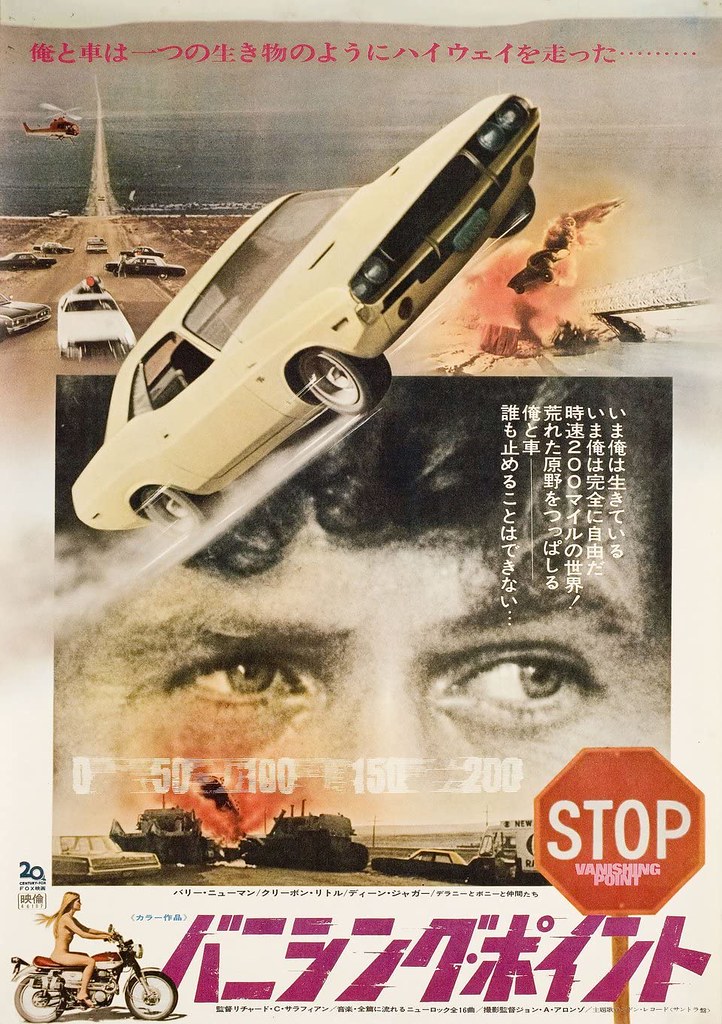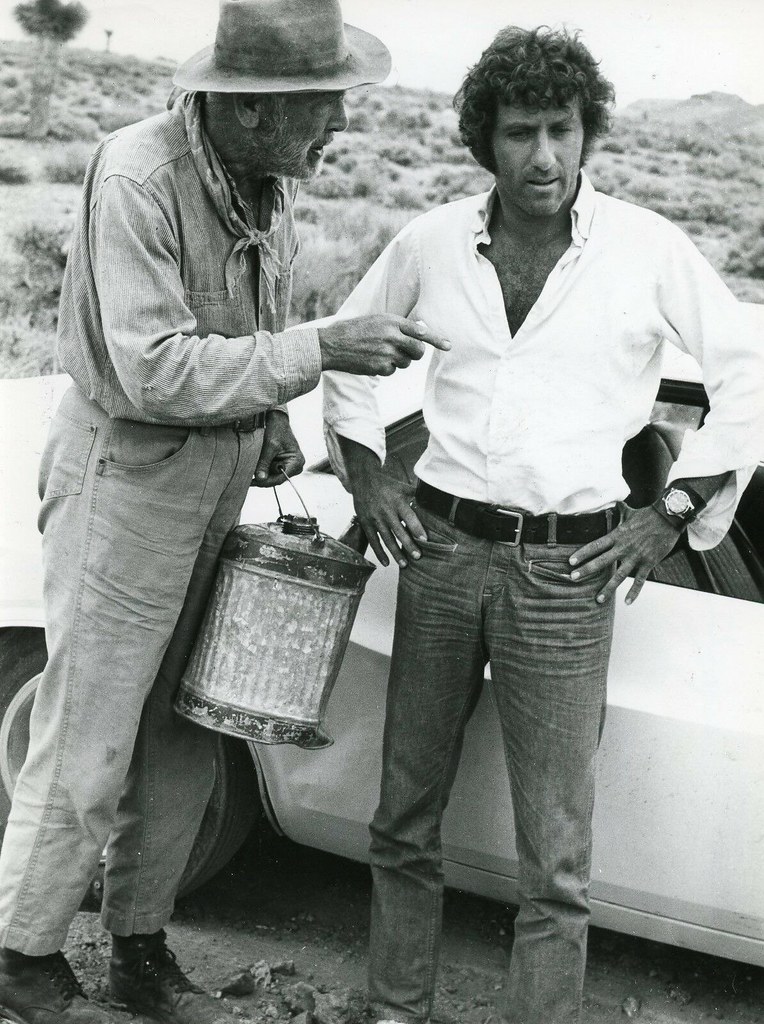“There was a German scientist by the name of Mobius whose concept was the elliptical band. You take a ribbon and you attach it together and you twist it. And if you traveled on one side of it and kept going, you would traverse both sides. In terms of the design of the picture, I saw an opportunity within the script… My feeling was that Kowalski doesn’t die. He’s on a journey, a journey through this planet, and that we are all on that journey — each of us at different speeds. There is no vanishing point.” ~Director Richard C. Sarafian
This month marks the 50th anniversary of the release of Vanishing Point (1971). If you’ve never seen this movie or even heard of it, you’re not alone. I only discovered it a few weeks ago! As a car enthusiast, I was excited to see a movie featuring a 1970 Dodge Challenger. It’s a cult film whose reputation has been acknowledged and enhanced by filmmakers like Quentin Tarantino and Steven Spielberg (who lists it as one of his favorite films). Vanishing Point lives up to its reputation.
Although not as recognizable as Bullitt or The French Connection— two films known for their car chase sequences– Vanishing Point keeps pace with both. In fact, the whole film is essentially one long chase sequence. Though it has a deceptively simple structure, there is more going on under the hood. There are subtleties at play that are hard to articulate. Vanishing Point is a reflective sojourn that rises above cliches and Hollywood conventions.
Kowalski (Barry Newman) is a delivery driver who makes a bet to deliver a Dodge Challenger from Denver to San Francisco in fifteen hours. While dodging the police, he meets an old prospector, a religious commune of singers, and a naked girl on a motorcycle! He becomes something of a cult hero thanks to Super Soul (Cleavon Little), a blind deejay with a seemingly mystical connection to Kowalski.
Vanishing Point visually captures the ambience of the American road, evoking the spirit of Jack Kerouac. The shots of milling crowds and small-town bystanders seem authentic, almost documentary-like. And it has a distinctly American sound. Except for a recurring, instrumental love theme, the score is primarily made up of rock and folk songs that embody the time. There’s no confusion as to what decade this film was made in. Vanishing Point has something to say about freedom, disillusionment with authority– and racial unrest. The scene depicting an off-duty police officer leading a mob into a black-operated radio station is not far removed from the tenor of our own times.
A Japanese poster for Vanishing Point.
In his review of the movie, film historian Leonard Maltin didn’t understand Kowalski’s motives for what he does. On the surface, it could be argued that it’s the drugs Kowalski is on that prompts him to run a motorcycle patrolman off the road– or perhaps it’s PTSD (in the days before it had a name). But Kowalski, as revealed in the flashbacks, is someone who has repeatedly suffered loss. This last ride was his opportunity to get back into the race. He was determined to win his wager, and it didn’t matter what he won because that wasn’t the motivation. He was hell-bent on finishing something and seeing it through, and no one was going to stop him. Kowalski may be out-racing the police like a classic antihero, but he’s a fundamentally decent man– and probably more honorable than those pursuing him.
Kowalski relates to the outsiders: the old man who catches the snakes in the desert and tells him to “root right in” to avoid the cops, the hippie on the motorcycle who offers him speed, and Super Soul who guides him through the airwaves. It is this latter relationship that grows during the course of the movie– from Kowalski turning off the radio and telling him to “go to hell” to communicating cordially one-on-one while listening to him on the car radio. Their growing bond is evident when Kowalski shows concern after the deejay suddenly sounds different. It is Super Soul who puts into words what audiences– his radio listeners as well as us– are feeling. He sounds the clarion call to the nation:
“And there goes the Challenger, being chased by the blue, blue meanies on wheels. The vicious traffic squad cars are after our lone driver, the last American hero, the electric centaur, the, the demi-god, the super driver of the golden west! Two nasty Nazi cars are close behind the beautiful lone driver. The police numbers are gettin’ closer, closer, closer to our soul hero, in his soul mobile, yeah baby! They about to strike. They gonna get him. Smash him. Rape… the last beautiful free soul on this planet.”
One of my favorite moments in the film is the scene in which Kowalski is driving aimlessly out into the desert with the barren landscape all around. The camera cuts back to him behind the wheel and then back to the sands passing by at high speed. This one shot somehow encapsulates the existential plight of its hero. If 2001: A Space Odyssey was the “ultimate trip” in motion pictures, Vanishing Point is the ultimate trip on four wheels. By the time this wild ride is over, you feel like you’ve been driving on “uppers” yourself.
Vanishing Point has a strange mystical quality about it. An air of unreality, bordering on the allegorical, hovers over the picture. This is emphasized even more strongly in the UK release of the film, which has Kowalski picking up a beautiful hitchhiker who vanishes by early morning. (The scene raises more questions than answers and does not appear in the American version.)
There is a lot going on here, and these mysteries are certainly open to interpretation. One of the film’s final questions comes at the very end. It’s the question of “Why?” After repeated viewings, everything makes a little more sense. This is why Vanishing Point is such a fascinating film. Besides being a great action film, it operates on a whole other plane that addresses the human condition. (Smokey and the Bandit it is not!)
Both versions of Vanishing Point, the American and UK releases, are available on the same Blu-ray. Among the many bonus features is an essential documentary on the making of the film, Built For Speed.
~MCH


